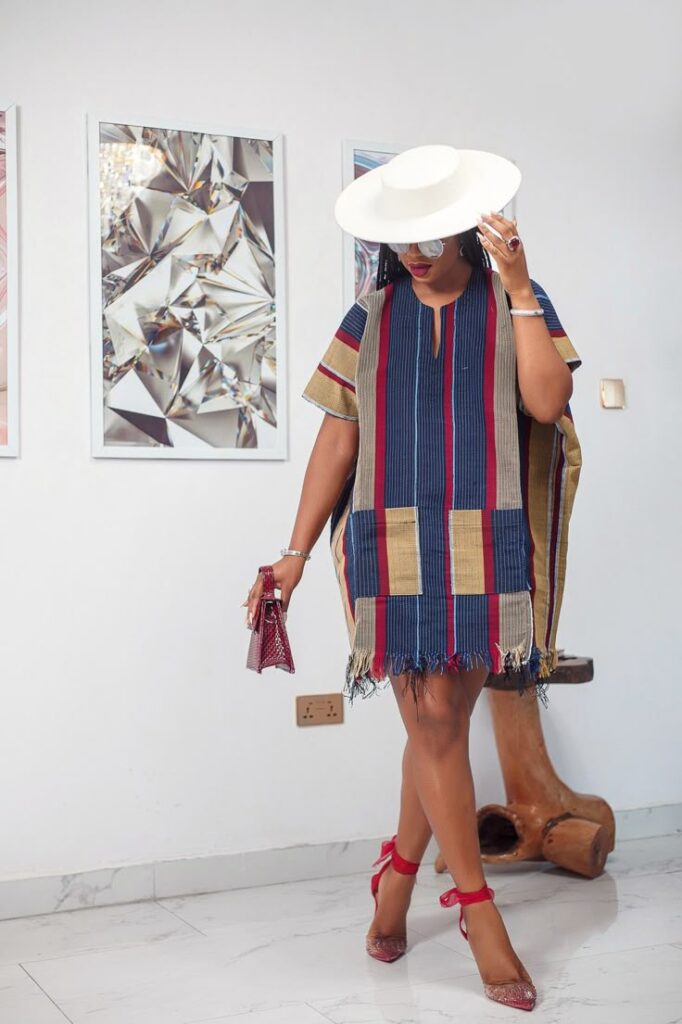Aso Oke, the woven fabric synonymous with Nigeria’s Yoruba heritage, is much more than just a textile—it is a living testament to the region’s rich cultural tapestry. Once a symbol of royalty and prestige, Aso Oke has journeyed through centuries, evolving and adapting to modern fashion without losing its traditional essence. In this article, we explore the historical roots, cultural significance, and contemporary resurgence of Aso Oke, celebrating its timeless appeal and dynamic evolution.
Historical Roots and Traditional Significance
Aso Oke’s origins trace back to the Yorubas, where the art of weaving was passed down through generations. Traditionally, the fabric was reserved for kings, chiefs, and other dignitaries, serving not only as clothing but also as an emblem of social status and authority. The intricate process of hand-weaving and dyeing demonstrated both the artisan’s skill and the community’s deep respect for craftsmanship. Each piece of Aso Oke is imbued with history—its patterns, textures, and colors conveying stories of community, ritual, and collective identity.

Cultural Identity and Symbolism
Beyond its aesthetic allure, Aso Oke carries profound cultural symbolism. Every motif and design element is often steeped in meaning, representing values like unity, prosperity, and respect for tradition. For many, wearing Aso Oke is a nod to heritage—a proud reminder of their roots and a celebration of ancestral customs. This cultural depth not only enriches the fabric’s significance but also cements its place as a vital component of African heritage, bridging past and present in every thread.
The Art of Weaving: Technique and Craftsmanship
The process of creating Aso Oke is an art form that requires precision, patience, and a deep understanding of complex patterns. Skilled weavers use traditional looms to interlace threads by hand, producing intricate designs that vary widely by region and family tradition. This labor-intensive craft is a celebration of manual artistry—each piece being unique, crafted with care, and reflective of the weaver’s lifelong dedication. In many communities, these artisans are revered as custodians of an art that encapsulates the spirit of African ingenuity and resilience.
A Modern Revival in Fashion

In recent years, Aso Oke has experienced a renaissance in the global fashion arena. Modern designers are reinterpreting traditional motifs and integrating them into contemporary silhouettes—transforming the fabric into statement pieces suitable for both high fashion and everyday wear.

This fusion of tradition with modern aesthetics has propelled Aso Oke from ceremonial attire to a versatile material embraced by trendsetters around the world. Fashion houses are now featuring Aso Oke in collections that celebrate African culture while appealing to cosmopolitan sensibilities, underscoring its universality and timelessness.
A Sustainable Future Rooted in Tradition
The renewed interest in Aso Oke also speaks to broader trends toward sustainability and ethical fashion. As consumers become more conscientious about the environmental and social impacts of their clothing choices, artisanal fabrics like Aso Oke offer a compelling alternative to mass-produced textiles.

Emphasizing quality, heritage, and sustainable practices, the modern Aso Oke narrative champions a return to ethical craftsmanship and responsible design. This shift not only supports local artisans but also preserves a critical part of Africa’s cultural legacy for future generations.
Conclusion
Aso Oke stands as a powerful emblem of tradition, culture, and modern style—a fabric that has gracefully transitioned from the royal courts to contemporary runways. Its rich heritage is a reminder of the enduring bonds between art, culture, and community. As it continues to inspire designers and captivate audiences worldwide, Aso Oke not only honors the past but also paves the way for a future where authenticity and creativity intertwine. For enthusiasts of African fashion and cultural heritage alike, Aso Oke remains a symbol of beauty, innovation, and the unbreakable spirit of tradition.


Leave a comment